For the last two years there has been much discussion and debate around whether click through rate (CTR) is something Google uses to determine where to rank a site.
It all began way back when Rand Fishkin did an interesting experiment which provided some evidence behind his theory that CTR is in fact something that could influence rankings.

This theory makes sense; why wouldn't Google be looking at user based signals to improve search results?
Just as we do user testing on our websites to increase the number of conversions, Google will surely want to be looking at user signals to ensure they are fulfilling their goal of 'organising the world's information' in the correct order in SERPs.
Why CTR is not a ranking factor, from Google
However, many times when Google, and more specifically Gary Illyses, has been questioned on this we have received the response of the opposite. That Google does not use CTR as a ranking factor due to it being a 'noisy signal' and something that could be gamed by spammers.
See this response from Gary Illyses in an interesting interview with Kwasi Studios:

We also received the same response from Gary when he mentioned the topic in June 2015 at SMX Advanced.
At the event Gary did, however, say CTR is being used for personalisation, meaning search results change if you frequently click on the same site. This can be especially useful for ambiguous terms.
For example, if a user searched for 'Jaguars' a 'Query Deserves Diversity' (QDD) algorithm will take effect and display results for the car brand, the Jacksonville Jaguars as well as the animal.
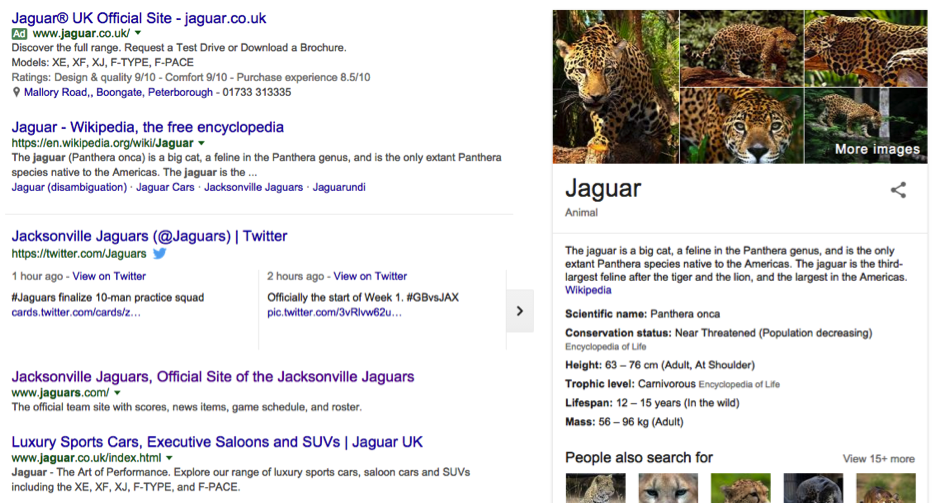
If the user then clicks on the car brand and does that frequently, Google will be more likely to show the Jaguar car brand due to the high CTR for the Jaguar site. Other than that, Gary says click data is not being used.
Why CTR is an indirect ranking factor, from Google
Due to this negative feedback received from Google around the topic, some have dismissed CTR as something that Google does not make use of.
However, conversely we have had other statements from Google that specify they do in fact use CTR in some circumstances.
The primary evidence we have from Google that CTR is being used for more than just personalisation is in this excellent presentation by Paul Haahr titled 'How Google Works: A Ranking Engineer's Perspective'.
If you have not watched the presentation yet, I highly recommend it! You can find a video of it here.
From this video, we can gather Google is using click through rate, but not to adjust rankings directly. They are instead using it indirectly in controlled situations to validate the quality of search results.
They are also using it to verify that an algorithm change has the desired results. 'Controlled situations' means they are taking a portion of search results, testing changes and using CTR as a metric to measure if the changes had the desired impact on improving user engagement.
Following what Google has said regarding CTR, this means that it is not being used in a way to directly change search results. It is instead being used to test whether changes to direct ranking signals such as content and links are improving user engagement and the quality of search results.
This is explained in this slide on Paul Haahr's presentation:
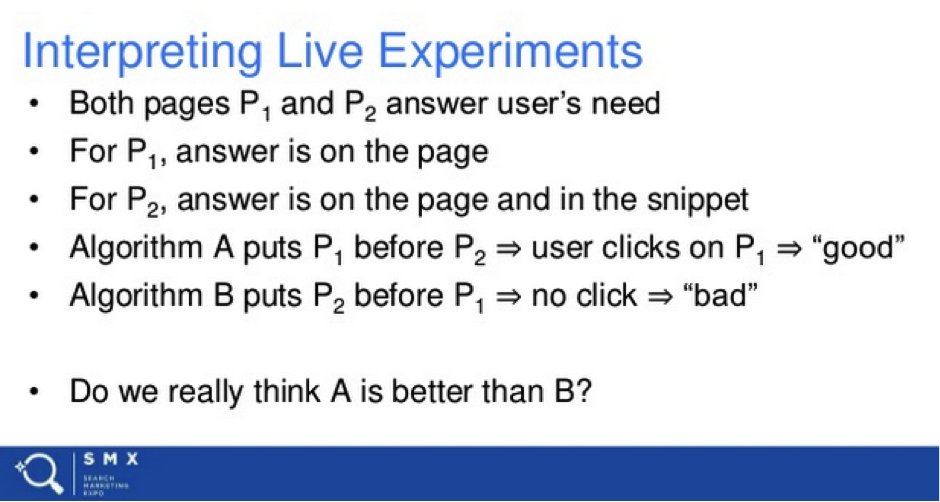
Other ways Google is measuring the quality of search results
As explained in the presentation, CTR is only one of the ways Google is testing search results are showing up in the correct order.
They are also taking a more manual approach with human rater experiments. This is where Google will show an actual person a search result that has an experimental algorithm change on it, and they get them to score the page based on whether the needs have been met (does the page fulfil user intent), and the quality of the page.

What this means is gaming the system explained here by artificially increasing CTR becomes virtually impossible, as along with live experiments, there is a manual review of pages before algorithm changes take place.
I am sure CTR and human rater experiments are only some of the ways Google will be testing algorithm changes.
While this was never mentioned as a user engagement metric in the presentation, there is a high chance they are also paying attention to pogo sticking and dwell time. If this is true, it makes metrics such as average time on site and bounce rate important things to consider.
Here is a bit of data sourced from our in-house 'Roadmap' technology that looks at over 160 potential ranking factors and shows correlations in search performance.
And yes, I know correlation does not mean causation, but it can give us a good indication what Google is taking into consideration when ranking sites. Here is how average time on site correlates:
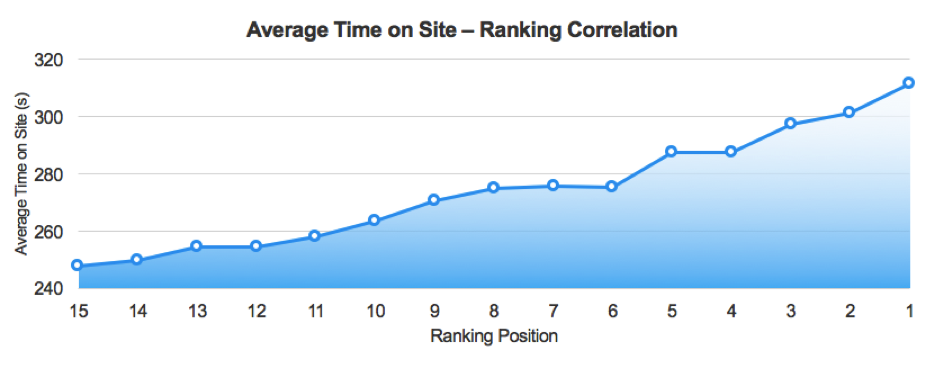
Source: Stickyeyes Roadmap
Of course, this does not mean Google is directly creating algorithms that change rankings based on things such as average time on site.
It does, however, inform us that Google is favouring sites that searchers stay on.
This metric could be used in a similar way to how Paul Haahr explains Google uses CTR, where they will adjust traditional signals such as content and links depending on whether the user stays on the site or not. Again, this is all speculation with a bit of data to back it up.
Why CTR Is a direct ranking factor (sometimes), from Rand
Despite what we know is 100% correct, as Google has confirmed it, we still have Rand Fishkin's CTR experiments that say Google is not telling us everything they use click data for.
This is where we have to speculate based on the information the SEO community has managed to get out of Google.
Thankfully some insight into this was given by Googler Andrey Lipattsev in a Q&A show back in March 2016 when Rand questioned him on it. Here is Andrey's response to Rand asking why exactly that happened:
“Andrey: It's hard to judge immediately, without actually looking at the data in front of me. But, in my opinion, my best guess here would be the general interest that you generate around that subject, and you generate exactly the sort of signals that we are looking out for, mentions and links and social tweets and social mentions, which are basically more links to the page, more mentions of this context. I suppose it throws us off for a while until we're able to establish that none of that is relevant to the user intent, I suppose.”
From Andrey's response, I believe he is explaining part of Google's algorithm that is a temporary ranking factor that identifies hot topics or searches and then adjusts rankings accordingly depending on social signals, and possibly user behaviour.
We already know Google tries to push rankings up for fresh content, and this algorithm seems similar to the freshness algorithm (announced way back in 2011).
When this ranking change occurs, it is more than likely that Google applies the technology they have to combat click fraud in Adwords. I believe this experiment that came to the result the CTR was not a ranking factor by using bot traffic backs this up.
What we know – summarised
From all of the above we can summarise what we know into the following things:
- Firstly, CTR does seem to have an immediate and temporary impact on rankings in some cases. This is more than likely due to an algorithm that aims to spot trending content and hot topics, and then adjusts rankings depending on which page is the most popular and seems to be fulfilling user intent. Again, this ranking change is temporary, and I imagine will be tough to try and game. It worked so well when Rand ran his experiment because he did it with actual people, not bots. In this instance, CTR is a temporary direct ranking factor.
- Secondly, Google is using CTR in live experiments to quality-check their results. This is not being done across all search results but in a controlled manner across a portion of different SERPs. Based upon the results, Google will then adjust other algorithms to do with links, content, etc. In this case, CTR is an indirect ranking factor.
- Thirdly, Google is using CTR to personalise results for individual users.
How to improve click-through rate
It is evident user engagement and sending users to the correct website is important to Google, because of this we also know optimising CTR is something we should be doing.
The rest of the post will be about how to identifying click through rate opportunities, and then how to improve it.
Finding low CTR terms
The only reliable data we have on CTR comes from Google itself in the Search Console search analytics report.
To help with identifying these terms I have made this CTR Opportunity Analysis template Google sheet. This sheet finds out what the average CTR is for keywords ranking position 1 – 100 from a GSC export, and then compares each keyword against your site's average CTR for that position.
This allows you to identify if there is a significant opportunity to improve click-through for a particular query. You can see whether there is an opportunity as it will tell you in the 'Optimise CTR' column.
If you rank higher than position ten it will simply say 'Improve Rankings'. If you have your own data on average CTR for it each position, there is a hidden sheet called 'CTR Ref' where you can fill this information in. You could also replace it with data from this Moz CTR study.
To find queries that that have a low click through rate do the following:
- Navigate to the search analytics report in GSC.
- Add the below filters (change country depending on your location, you may also want to add a device filter if desktop or mobile is your focus):

- Download the results as a CSV (bottom left of the page). Then open up the CSV and format the position column so it has 0 decimal places (this will make more sense after the next step).
- Make a copy of this spreadsheet by going to File > Make A Copy.
- Paste the corresponding columns from the Google Search Console CSV into the template. At this point, you can scrape Google for each keywords position instead of relying on GSC's average position if you want to.

- Once you have this information set out like the above you can then filter the 'Optimise CTR' column to only show results that return a yes.
- Next, you can sort from high to low on impressions. The high-impression keywords that also return low scores on the 'CTR Difference from Average' are your top opportunities for optimising CTR.
- Copy one of these keywords, and head back to Google Search Console. In the queries filter add a filter for that keyword exactly.

- After that select 'Pages' in the filter bar at the top to show pages ranking for that keyword.
- The page listed first should be the page you need to optimise.
Top ways to optimise for CTR
By now, we have the keywords and pages that we need to optimise for. We just need to go through the process of actually improving our pages. Here are some different things you can do to improve CTR:
- Adjust title tags to contain the words or phrases you are getting a low CTR on. You can improve this further by combining your SEO focused keywords with other call to actions that will entice users to click your listing. Another thing you can do is compare your listing to what is currently in the titles for Adwords listings. What is in these titles has usually been optimised and tweaked heavily to improve CTR, because of this taking inspiration from them is a good idea.
- Optimise meta descriptions to include terms you are trying to improve CTR for. Including the term means they will be bolded in search results which will increase the chance of them being clicks. It is best practice to optimise each description individually to increase the chance users will click it, so try to avoid generating these based off of a couple of variables if possible. Again, for meta descriptions you can also look towards Adwords listings for inspiration.
- Optimise URLs to include target keywords. Similar to meta descriptions including target terms in URLs means they will be bolded.
- Add relevant schema markup to the page to generate rich snippets on your listing. This can have a pretty dramatic effect on CTR, especially for schema markup that substantially enhances your listing such as review and product markup.
Once you have done any or all of the above, check how organic traffic changes. Then go back and retest something different. You can rinse and repeat this process until you are seeing diminishing returns from improving CTR for a page.
Final words
Overall we can say that CTR is something that is being used by Google one way or another. Rand seems to have uncovered ways in which it is used directly and temporarily to modify search results.
Paul Haahr from Google has informed us it is used indirectly to measure the quality of search results. Because of the above, and because it can simply increase organic traffic, CTR is something you should be taking into consideration when optimising your site.
Along with focusing more on click through rate, SEOs need to become more aware that while getting a site technically fit for purpose, writing great content, and building quality links is important.
We should also spend more time thinking about user engagement and UX, as they are both becoming a more and more important aspect to consider when trying to perform well in search results.
Let me know how the CTR Opportunity Analysis template works for you, and any thoughts you have on CTR or user engagement as a ranking factor in the comments!
Sam Underwood is a Search and Data Executive at Zazzle Media and a contributor to SEW.
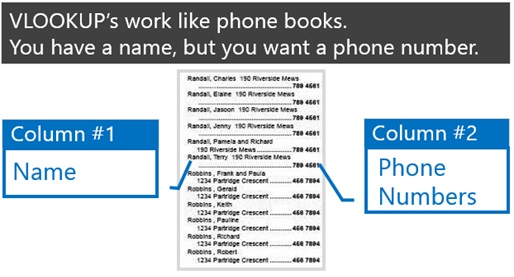
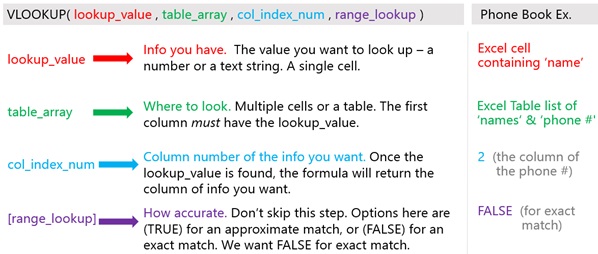


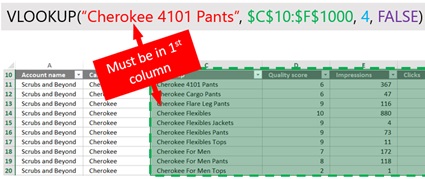
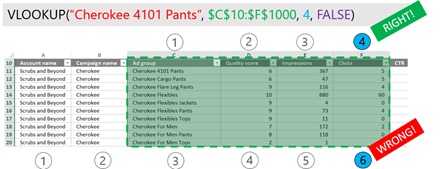

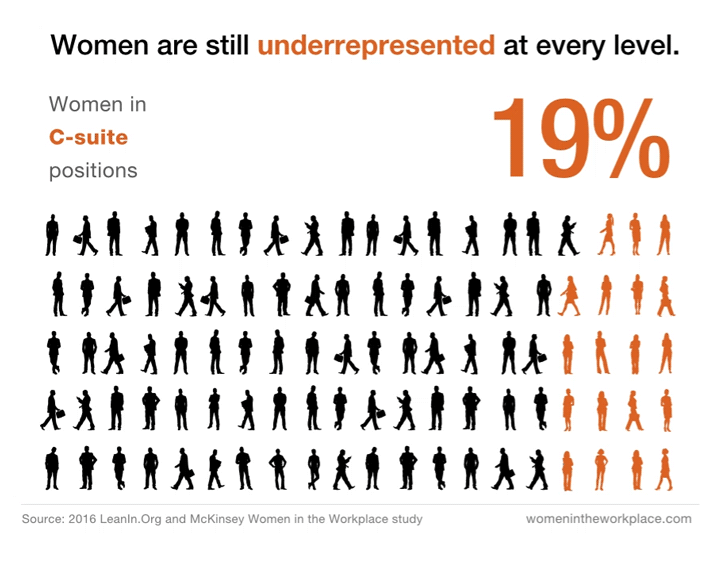




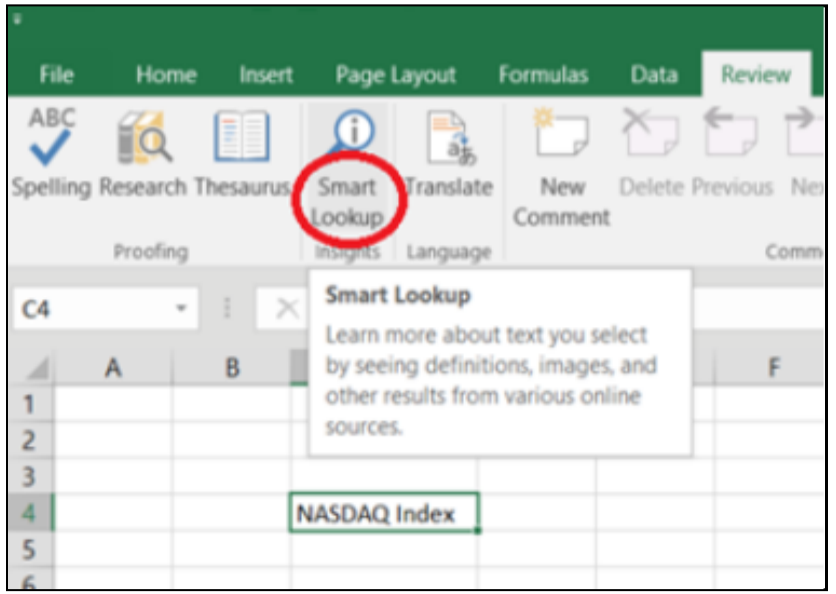
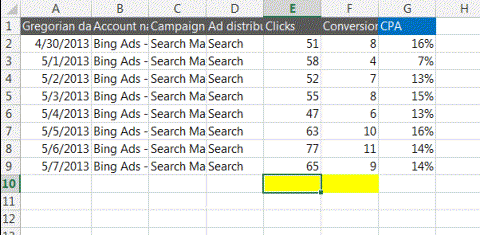


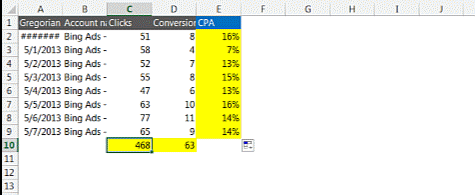
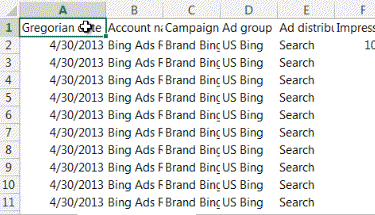
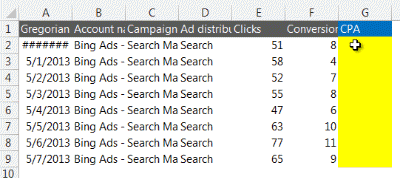
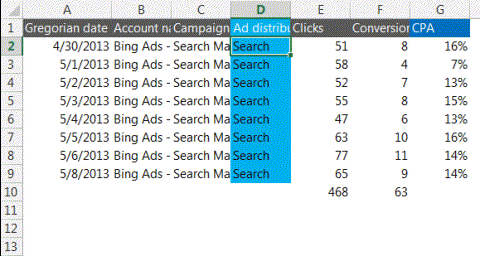
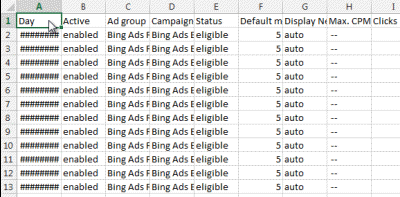

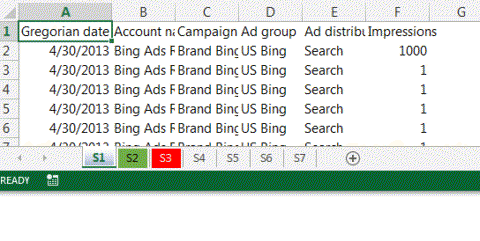
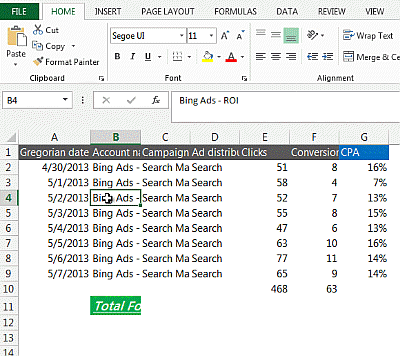















 You cannot know everything there is to know about how to get where you want to be in life. While it's possible to learn the needed skills, this will take time and likely a lot of money. Instead, what if you had someone (or a group of people) who can help guide you to success?
You cannot know everything there is to know about how to get where you want to be in life. While it's possible to learn the needed skills, this will take time and likely a lot of money. Instead, what if you had someone (or a group of people) who can help guide you to success?











